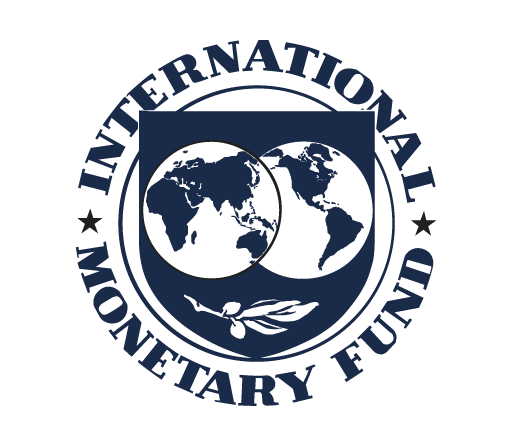IMF Says Bangladesh Is Set to Overtake India in Per Capita GDP.
Bangladesh has over the years managed to grow its exports, leading to a rise in its per capita GDP growth, and is now set to overtake India which had a significant lead over it a few years ago.
India is likely to drop below Bangladesh in terms of per capita gross domestic product (GDP) this year, according to the International Monetary Fund (IMF), owing to the nationwide lockdown imposed to contain the spread of the COVID-19 pandemic.
According to IMF-World Economic Outlook (WEO), Bangladesh’s per capita GDP in dollar terms is expected to grow 4% in 2020 to $1,888. On the other hand, India’s per capita GDP is expected to decline 10.5% to $1,877 – the lowest in the last four years. The GDP figure for both countries is at current prices. However, India’s per capita GDP in dollar terms is expected to grow 8.2% at $2,030 in 2021, compared with an expected 5.4% growth for Bangladesh at $1,990. Nepal and Bhutan are expected to grow their economies this year, while the IMF has not divulged Pakistan’s data for 2020 and beyond.More in Economy :RBI Monetary Policy Panel to Remain Accommodative, Wary of Inflation. As India Gears Up For Agri Reform, A Look Back at Tamil Nadu and its Small Dairy Producers Watch | Delhi Waqf Board Workers Haven’t Been Paid for Months. Punjab’s New Farm Laws: High on Rhetoric, Short on Ideas?IPL’s Dark Side: A Rise in Suicide Cases Has Greeted the Return of Live Cricket on TV. Amazon Refuses to Appear Before Parliament Joint Committee on Data Protection Bill. Global growth would contract by 4.4% this year and bounce back to 5.2% in 2021, the report said.
The de-growth projection comes after India reported a contraction in its GDP for the June quarter at 23.9%, making it the worst performer among G20 economies. The Reserve Bank of India last week admitted that the economy will contract 9.5% in FY21, with a mild recovery in economic activity in the March quarter.What makes this situation even worse is that till five years ago, India’s per capita GDP was nearly 40% higher than Bangladesh’s. In the last five years, Bangladesh’s per capita GDP has grown at a compound annual growth rate of 9.1%, compared with 3.2% growth reported by India during the same period.With the ongoing US-China trade war, apart from other global tensions, Bangladesh has over the years adapted to the changing landscape and has managed to grow its exports, leading to a rise in its per capita GDP growth.
The country is now set to overtake India which had a significant lead over it a few years ago.Bangladesh’s GDP growth in last few years has averaged around 8%, according to reports, at a time when economic growth in rest of the world was slowing down. HSBC Bank had predicted that Bangladesh would be the 26th largest economy in the world by 2030.GDP PPP comparisonHowever, according to the government, in terms of purchasing power parity, India’s per capita GDP in 2020 is estimated by IMF at $6,284 compared with $5,139 for Bangladesh.In 2019, India’s GDP was 11 times more of Bangladesh while population was eight times more, said the government, in a reply to Congress leader Rahul Gandhi’s tweet comments on the IMF’s projections.
A fast-growing export sectorChina is Bangladesh’s largest trading partner, with annual bilateral trade valued at approximately $15 billion. Trade with India is only slightly more than a third of that amount.According to economists who spoke to Business Standard, Bangladesh’s economic growth has been underpinned by its fast-growing export sector and a steady rise in rate of savings and investment in the country.Bangladesh shipped an estimated $45.7 billion worth of goods around the globe in 2019 – a 44% increase since 2015, show data. With a population of 166.6 million people, its total $45.7 billion in 2019 exports translated to roughly $275 for every resident in the South Asian country.
In contrast, India’s exports have stagnated in recent years. India’s merchandise trade has been weakening even before the pandemic hit the economy and external demand. According to a report, the country’s exports have been in negative territory since June 2019. Added to that, due to the COVID-19 pandemic, both exports and imports started declining since March, leading to a trade surplus in June for the first time in 18 years.In terms of per capita GDP, Bangladesh has grown at a compound annual growth rate of 9.1% since 2015, against 3.2% growth reported by India during the period. This has allowed Bangladesh to close the economy gap with its giant neighbour.
Bangladesh’s gross savings rate was recorded at 30.1% in June 2020, and 29.5% in June 2019, against a record low of 27.4% in June 2018, data showed.Reports show that the sales of savings certificates in Bangladesh have risen by leaps and bounds. The flow of credit to the private sector is growing as well. Apart from imports, the pandemic does not seem to have had too much of a detrimental effect on Bangladesh’s economy.In India, savings rate touched a 15-year low as the slowing economy took a toll on that segment, weakening the country’s macro economic position. India’s gross savings fell to 30.1% of the GDP in fiscal 2019 from 34.6% in fiscal 2012, and 36% in 2007-08, data from the Central Statistical Organisation shows.
According to the WEO database, India’s economic contraction in 2020 will be its worst since the 1990-91 economic crisis when the per capita GDP had contracted 17.5% in 1991. India’s GDP per capita in dollar terms had last contracted 1% year-on-year in 2012 due to currency depreciation. In all, India’s per capita GDP in dollar terms contracted on eight occasions in 40 years, five of which occurred prior to 2000.
(The Daily Star)




